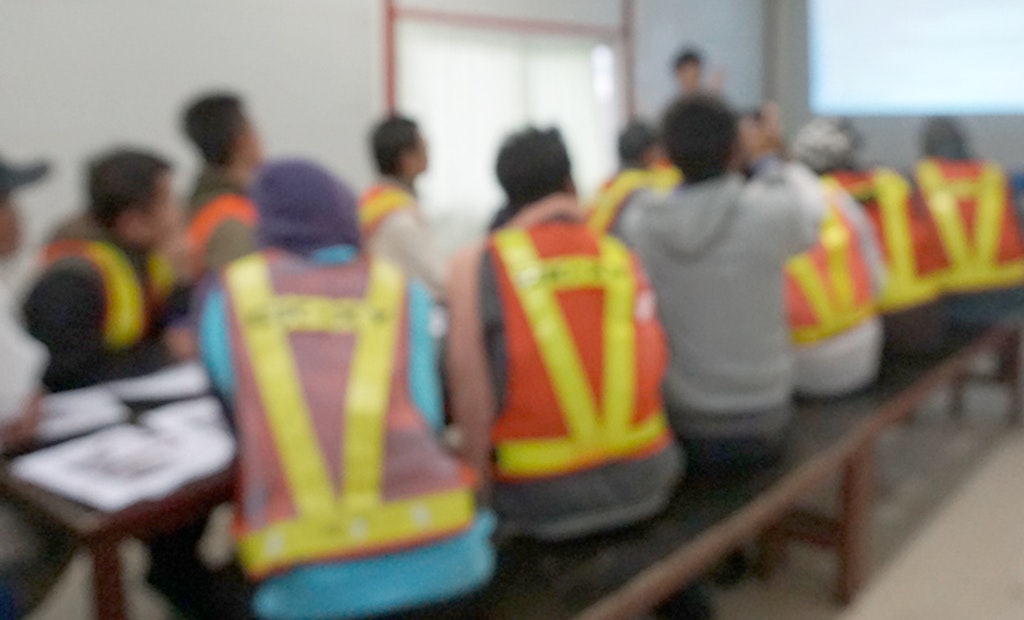Interested in Residential Plumbing?
Get Residential Plumbing articles, news and videos right in your inbox! Sign up now.
Residential Plumbing + Get AlertsKeeping people safe on the job is crucial to the success of any business and the morale of its employees, and it’s the law. Organized and on-going safety training will always be your best weapon when it comes to protecting your team against workplace hazards.
Install a culture of safety
Making safety a key part of your business’ culture begins on day one. New employees should immediately sense the high priority placed on safety when they join the company. But emphasizing the importance of safety training goes beyond a worker's introduction to the job. It takes ongoing effort and reminders. Analyze your own practices and build a program just for your team. Hazard awareness, equipment handling, and personal protective equipment are good places to start.
Hazard awareness: A successful safety training program should begin with the basics: hazard awareness. Pointing out the risks of the job up front will underline the need for vigilance and care for your team. Highlight a few of the more common dangers, such as trips and falls, disease or electric shock.
Equipment handling: Proper equipment handling is important to safe operations. Your employees need to know what equipment to use and when, but they also need to understand why and how to use it properly. Provide a checklist on how to inspect equipment before use, use it correctly on the job, and clean and inspect it after use. Make sure your employees have access to well-made equipment from a trusted manufacturer. While you might be able to purchase no-name or lower quality equipment at low prices, you may have no way of knowing whether it complies with every safety standard.
Personal protective equipment: After effective training, gear is the best protection you can provide against workplace hazards. Outfit your staff with PPE for the jobs they will face. Educate employees about the protection each piece gives, risks associated with not wearing PPE, and how to wear it correctly. Protective gear is only effective when worn properly. A practice drill where your technicians try their gear on will help them memorize how and when to wear it, and you’ll be sure of their ability to prepare for any job.
Learn from experience
Learn from accidents and illnesses that have affected your employees and evaluate how they could have been avoided. Discuss what happened and ask your crew for suggestions. Then review and refresh your program over time to reflect this new information.
Have an actionable plan
No matter how big your company is, having a strategic and actionable safety training plan is what will ensure success.
- Define your program. How often will you hold safety training? What will safety training during onboarding look like? Will it be a classroom session or will it be something you host in the field? Will you have a test and reward employees who score well?
- Plan your training sessions. Use the outline above to identify what safety issues are important. Map out what will be discussed in your safety training sessions. Have an agenda and stick to it.
- Put it on the calendar. Outline safety training on your orientation training agenda. Set a regular calendar reminder for your ongoing training refreshers.
- Engage your staff. Ask seasoned members of your team to lead training seminars. It is a great way to keep them engaged in the safety process while training new team members. Ask new employees to role-play and discuss challenges as a group.
Make it stick
Safety training can save lives — but only if it sticks. It’s important to make this training mandatory so that everyone receives the same lessons. Customize your program to make sure you are meeting your employees’ learning needs. Think about what has or has not worked with training in the past and use that to improve your methods. For example, if people have trouble finishing online classes, consider in-person training and demonstrations in the future.
And remember — safety training isn’t a “one and done” thing. It requires continuous learning, especially as technology advances and new equipment or procedures become part of the job. The tools may change, but safety training will always be necessary when it comes to protecting your biggest asset — your people — against workplace hazards.
Visit MyTana's blog for more articles written to help plumbing and drain contractors build and grow their business.
Visit the MyTana Storefront






